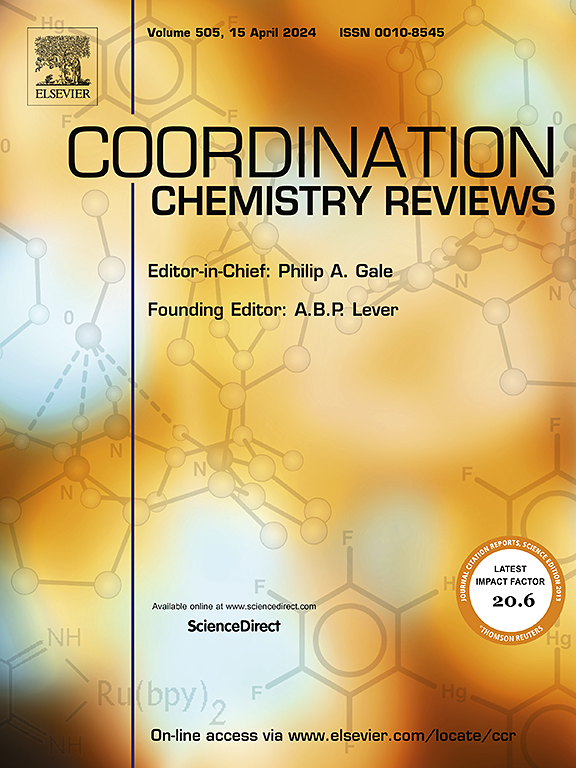Recent updates on cadmium indium sulfide (CdIn2S4 or CIS) photo-catalyst: Synthesis, enhancement strategies and applications
IF 20.3
1区 化学
Q1 CHEMISTRY, INORGANIC & NUCLEAR
引用次数: 0
Abstract
Photocatalytic technology harnesses solar energy to address the global energy crisis while offering sustainable solutions for environmental applications. Among emerging photocatalysts, Cadmium indium sulfide (CdIn2S4 or CIS) stands out due to its excellent visible light absorption, optimal bandgap, non-toxicity, durability, notable catalytic efficiency, and tunable morphology, making it an appealing candidate for diverse photocatalytic applications. The intrinsic electronic, chemical, physical, and optical properties of CIS nanomaterials are highly tunable, rendering them promising candidates for diverse photocatalytic applications. However, CIS has undergone extensive modifications and optimization to attain excellent photocatalytic activity. The crystalline properties and basic photocatalytic mechanism were deliberated by density functional theory (DFT) calculations. This review provides a comprehensive insight into numerous modification techniques of CIS, including doping, surface defects, metal deposition, carbon loading and heterojunction formation, with effective activity of CIS-based heterojunction. Subsequently, the CIS-based photocatalysts for photocatalytic degradation, photocatalytic reduction of carbon dioxide, hydrogen evolution and hydrogen peroxide production applications from the previous five years will be examined and concluded with an eye toward the future. This review offers an in-depth and critical analysis of these aspects, demonstrating a perspective not previously presented.

求助全文
约1分钟内获得全文
求助全文
来源期刊

Coordination Chemistry Reviews
化学-无机化学与核化学
CiteScore
34.30
自引率
5.30%
发文量
457
审稿时长
54 days
期刊介绍:
Coordination Chemistry Reviews offers rapid publication of review articles on current and significant topics in coordination chemistry, encompassing organometallic, supramolecular, theoretical, and bioinorganic chemistry. It also covers catalysis, materials chemistry, and metal-organic frameworks from a coordination chemistry perspective. Reviews summarize recent developments or discuss specific techniques, welcoming contributions from both established and emerging researchers.
The journal releases special issues on timely subjects, including those featuring contributions from specific regions or conferences. Occasional full-length book articles are also featured. Additionally, special volumes cover annual reviews of main group chemistry, transition metal group chemistry, and organometallic chemistry. These comprehensive reviews are vital resources for those engaged in coordination chemistry, further establishing Coordination Chemistry Reviews as a hub for insightful surveys in inorganic and physical inorganic chemistry.
 求助内容:
求助内容: 应助结果提醒方式:
应助结果提醒方式:


